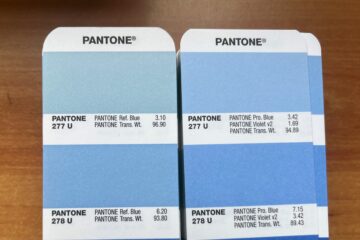Choosing the best font for your design project can make or break your communication. Fonts convey not only information, but also mood, tone, and personality. How do you pick the right one among thousands of options? Here are some tips to help you find the perfect font for your design project.
Know your audience and purpose
Before you start browsing fonts, you need to have a clear idea of who you are designing for and what you want to achieve. Different fonts suit different contexts, audiences, and goals. For example, a playful font might work well for a children’s book, but not for a legal document. A formal font might be appropriate for a business card, but not for a poster. Think about the message you want to convey and the impression you want to make.
Consider readability and legibility
Readability and legibility are two important factors that affect how easily your text can be understood. Readability refers to how well the text flows and fits the layout, while legibility refers to how well the individual characters can be distinguished. To ensure readability and legibility, you need to choose a font that matches the size, length, and medium of your text. For example, a serif font might be more readable for long texts in print, while a sans serif font might be more legible for short texts on screen. You also need to pay attention to the spacing, alignment, and contrast of your text.
Experiment with different styles and categories
Fonts come in various styles and categories, such as serif, sans serif, script, display, and decorative. Each style and category has its own characteristics, advantages, and disadvantages. For example, serif fonts are more traditional and elegant, while sans serif fonts are more modern and clean. Script fonts are more expressive and artistic, while display fonts are more eye-catching and bold. Decorative fonts are more creative and fun, but they can also be more distracting and hard to read. You can experiment with different styles and categories to find the one that best suits your design project. You can also mix and match different fonts to create contrast and hierarchy, but be careful not to use too many or too similar fonts.
Test your font choices
Once you have narrowed down your font choices, you need to test them in different scenarios and settings. You need to see how they look on different devices, platforms, and browsers. You need to check how they work with different colors, backgrounds, and images. You need to evaluate how they perform in different sizes, formats, and resolutions. You need to ask for feedback from your clients, colleagues, or target audience. Testing your font choices will help you avoid any potential problems and ensure that your design project is consistent and effective.
Follow the best practices and guidelines
Finally, you need to follow the best practices and guidelines for typography and layout. These are some general rules and principles that can help you improve your design project and avoid common mistakes. For example, you should use a font that is compatible with your brand identity and style guide. You should use a font that is accessible and inclusive for your audience. You should use a font that is appropriate for the tone and voice of your content. You should use a font that is balanced and harmonious with your design elements. You should use a font that is simple and clear, but not boring or generic.
Choosing the best font for your design project can be a challenging and rewarding process. Fonts can make a big difference in how your design project communicates and connects with your audience. By following these tips, you can find the perfect font for your design project and create a stunning and successful design.

